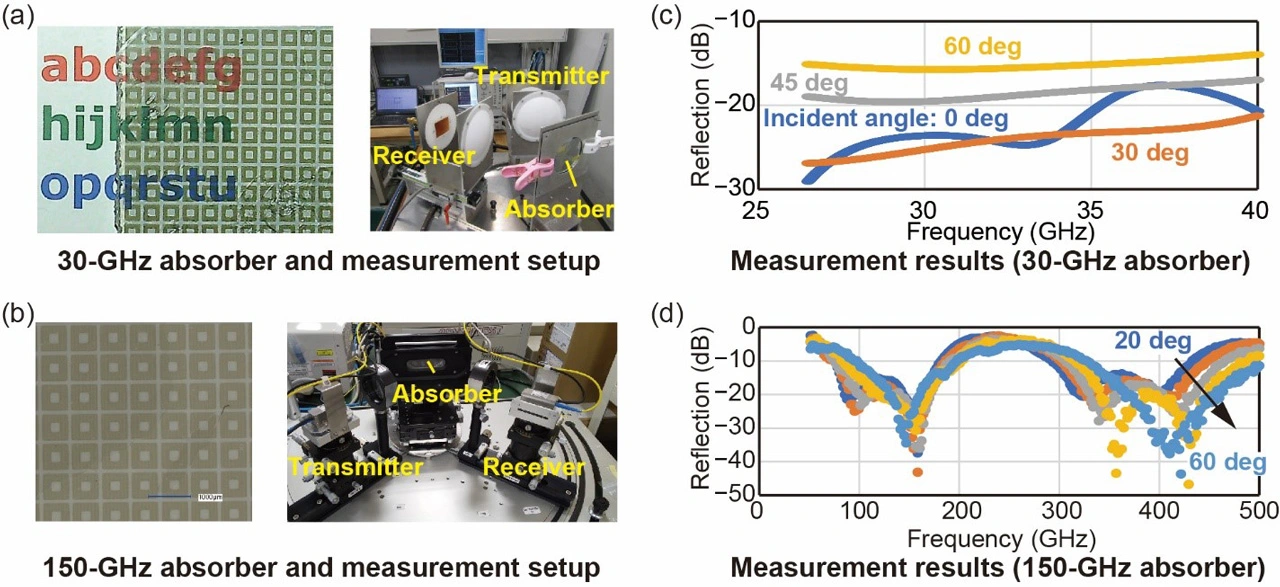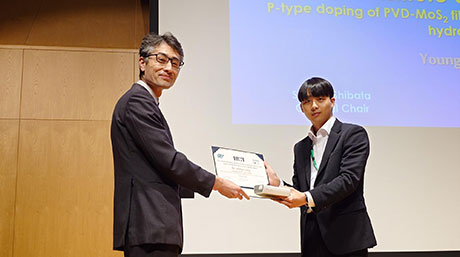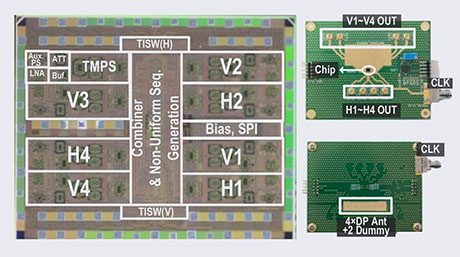Electrical and Electronic Engineering News
Wide-Incident-Angle Wideband Radio-Wave Absorbers Boost 5G and Beyond 5G Applications
Radio-Wave Absorbers for Millimeter-Wave and Terahertz Frequencies Enhance Advanced Antenna Beamforming and Steering
A collaborative research team, including the Institute of Science Tokyo (formerly Tokyo Institute of Technology), has developed wide-incident-angle radio-wave absorbers for millimeter-wave and terahertz applications. These absorbers demonstrate wideband frequency absorption up to an incident angle of 60 degrees, made possible through the use of frequency selective surface (FSS) patterns. This innovation greatly improves the absorbers' efficiency in advanced communication systems, such as 5G and Beyond 5G networks. Notably, the absorbers also allow low-frequency signals, like Wi-Fi, to pass through, distinguishing them from conventional absorbers. This dual functionality makes them highly versatile and suitable for modern communication systems that demand both high-frequency signal absorption and low-frequency transmission.

Figure.1 Fabricated radio-wave absorber and measurement setup (a) at 30 GHz and (b) at 150 GHz. Measurement results (c) at 30 GHz and (d) at 150 GHz.
5G wireless communication services have rapidly expanded worldwide, leveraging millimeter-wave (mmW) frequencies in the 24 GHz to 71 GHz range (referred to as frequency range 2, or FR2). Looking ahead, Beyond 5G and 6G services, projected to offer ultra-fast connectivity exceeding 100 Gbit/s, are expected to be introduced in the 2030s. Frequencies in the 150-GHz to 300-GHz range are being considered as potential candidates for these future networks. However, critical components such as radio-wave absorbers, essential for packaging and modularization, still need to be developed. These absorbers play a key role in reducing unwanted reflections and emissions from chips and modules across broad bandwidths, spanning tens of gigahertz. Additionally, modern mmW and terahertz (THz) absorbers must demonstrate strong performance at wide incident angles to support integration with advanced antenna technologies like beamforming and steering.
A collaborative research team, including Institute of Science Tokyo, Hiroshima University, Tokyo University of Science, the National Institute of Information and Communications Technology (NICT), and Maxell, Ltd., has developed wide-incident-angle radio-wave absorbers for mmW and THz applications. The team's research introduces radio-wave absorbers utilizing loop-shaped frequency-selective surfaces (FSS), which enhance co-design with antenna beamforming and steering due to their wide-incident-angle absorption properties. These absorbers are versatile and can be applied to lower frequency bands such as 4G LTE, 5G, Wi-Fi, and Bluetooth. The loop-shaped FSS improves performance in lower frequency transmission, reducing transmission loss to below 7 dB (simulated at 0-degree incident angle) at 2.4 GHz. The absorbers achieve 90% wideband absorption across the 26.5 GHz–40 GHz range (for 30-GHz absorbers) and 95.4 GHz–181 GHz/328 GHz–431 GHz (for 150-GHz absorbers) at incident angles up to 60 degrees.
- *This work was partly supported by JST A-STEP Tryout (JPMJTM22C5) and the commissioned research (JPJ012368C07401) by the National Institute of Information and Communications Technology (NICT), and the research fund from The Telecommunications Advancement Foundation, Japan.
- Reference
| Authors: |
Sangyeop Lee1*, Takeshi Yoshida2, Kyoya Takano3, Shinsuke Hara4, Issei
Watanabe4, Akifumi Kasamatsu4, and Yuko Sawaki5 *Corresponding author(s) |
|---|---|
| Title: | Wide-Incident-Angle Radio-Wave Absorber with Loop-Shape Frequency Selective Surface |
| Journal: | The 29th International Symposium on Antennas and Propagation (ISAP 2024) (International Conference) |
| Affiliations: |
1 Tokyo Institute of Technology, Japan 2 Hiroshima University, Japan 3 Tokyo University of Science, Japan 4 National Institute of Information and Communications Technology (NICT), Japan 5 Maxell, Ltd., Japan |
Related Links
Further information
Assistant Professor Sangyeop Lee
Institute of Integrated Research, Institute of Science Tokyo
E-mail : lee.s.af@m.titech.ac.jp





